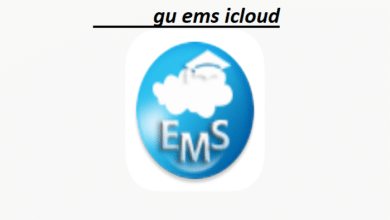Maximizing Your Digital Life with iCloud Storage: A Complete Guide

In today’s digital age, iCloud Storage has become an essential tool for managing and safeguarding your data. Whether you’re an Apple enthusiast or someone looking to streamline your digital life, understanding iCloud Storage can significantly enhance your experience. This comprehensive guide delves into the various aspects of iCloud Storage, providing you with the knowledge to make the most out of this powerful service.
What is iCloud Storage?
iCloud Storage is Apple’s cloud-based storage solution designed to seamlessly integrate with your Apple devices. It allows users to store photos, documents, backups, and more in the cloud, ensuring that your data is accessible from any Apple device. With iCloud Storage, you can easily sync your information across your iPhone, iPad, Mac, and even Windows computers, providing a unified and consistent experience.
The primary advantage of iCloud Storage is its ability to automatically back up your data, protecting it against loss or damage. Whether you accidentally delete a file or lose your device, iCloud Storage ensures that your important information remains safe and retrievable. Additionally, iCloud Storage offers various plans to accommodate different storage needs, making it a flexible option for both individual users and businesses.
Benefits of Using iCloud Storage
Using iCloud Storage offers numerous benefits that enhance your digital lifestyle. One of the key advantages is the seamless integration with Apple’s ecosystem. iCloud Storage works effortlessly with apps like Photos, Mail, and Contacts, ensuring that your data is always up-to-date and accessible across all your devices.
Another significant benefit of iCloud Storage is its robust security features. Apple employs advanced encryption methods to protect your data both in transit and at rest, providing peace of mind that your information is secure. Additionally, iCloud Storage includes features like two-factor authentication, adding an extra layer of protection to your account.
Furthermore, iCloud Storage facilitates collaboration and sharing. You can easily share files and folders with others, making it an excellent tool for both personal and professional use. Whether you’re working on a project with colleagues or sharing photos with family, iCloud Storage makes the process simple and efficient.
How to Set Up iCloud Storage
Setting up iCloud Storage is a straightforward process that can be completed in a few simple steps. First, ensure that you are signed in to your Apple ID on your device. Then, navigate to the Settings app, tap on your name, and select iCloud. From here, you can choose the apps and data you want to sync with iCloud Storage.
If you need additional storage beyond the free 5GB provided by Apple, you can upgrade your iCloud Storage plan. Go to the iCloud section in Settings, tap on Manage Storage, and select Change Storage Plan. Apple offers various plans, allowing you to choose the one that best fits your needs and budget.
Once set up, iCloud Storage will automatically begin backing up your data. You can monitor your storage usage and manage your files through the iCloud app or by visiting iCloud.com on your web browser. This seamless setup process ensures that you can start benefiting from iCloud Storage without any hassle.
Managing Your iCloud Storage
Effectively managing your iCloud Storage is crucial to ensuring that you have enough space for your important data. Apple provides several tools and features to help you monitor and optimize your storage usage. One of the primary ways to manage your iCloud Storage is through the Settings app on your Apple device. Here, you can view a detailed breakdown of your storage usage, showing how much space each app and service is consuming.
If you find that you’re running out of iCloud Storage, there are several strategies you can employ to free up space. Start by deleting unnecessary files, such as old backups, unused apps, and duplicate photos. Additionally, consider optimizing your photo storage by enabling the Optimize iPhone Storage feature, which stores smaller, space-saving versions of your photos on your device while keeping the full-resolution originals in iCloud Storage.
Another useful feature is the ability to manage your backups. iCloud Storage allows you to select which devices and apps are backed up, giving you control over what data is stored in the cloud. By regularly reviewing and managing your backups, you can ensure that you’re using your iCloud Storage efficiently and avoiding unnecessary data consumption.
iCloud Storage Plans and Pricing
Apple offers a variety of iCloud Storage plans to cater to different needs and budgets. The free plan provides 5GB of storage, which is sufficient for basic use, such as backing up your device and storing essential documents. However, if you require more space, Apple offers several paid plans with increased storage capacities.
The first tier of paid iCloud Storage starts at 50GB, which is ideal for individuals who need more space for photos, videos, and app data. The next tier offers 200GB of storage, suitable for families or users with extensive data storage needs. For those who require even more space, Apple provides a 2TB plan, which is perfect for professionals and businesses with large amounts of data.
Pricing for iCloud Storage varies by region, but it is generally affordable and offers excellent value for the storage and features provided. Additionally, Apple allows you to share your iCloud Storage plan with family members through Family Sharing, making it a cost-effective option for households with multiple Apple users.
iCloud Storage for Photos and Videos
iCloud Storage is particularly beneficial for managing your photos and videos. With the Photos app integrated into iCloud Storage, all your images and videos are automatically backed up and synced across your devices. This means that you can access your entire photo library from your iPhone, iPad, Mac, or even a Windows PC with ease.
One of the standout features of iCloud Storage for photos is the ability to optimize storage space on your device. By enabling the Optimize iPhone Storage option, your device will store smaller, compressed versions of your photos and videos locally, while the full-resolution originals are safely stored in iCloud Storage. This helps free up valuable space on your device without sacrificing access to your media.
Additionally, iCloud Storage offers powerful organizational tools. You can create albums, tag photos with keywords, and use facial recognition to categorize your images automatically. These features make it easy to find specific photos and keep your library well-organized, enhancing your overall user experience.
iCloud Storage for Backup and Restore
One of the most critical uses of iCloud Storage is for backing up and restoring your Apple devices. iCloud Storage ensures that all your important data, including app data, device settings, photos, and messages, are securely backed up to the cloud. This automatic backup process provides peace of mind, knowing that your data is safe in case of device loss, damage, or upgrade.
Restoring your device from an iCloud Storage backup is a simple process. When you set up a new Apple device or reset your existing one, you can choose to restore from an iCloud Storage backup. This restores all your apps, settings, and data, making the transition to a new device seamless and hassle-free.
Moreover, iCloud Storage allows you to manage your backups efficiently. You can view and delete old backups directly from your device’s Settings app, ensuring that you only retain the backups that are necessary. This management capability helps you maintain optimal use of your iCloud Storage space and keeps your backups organized.
iCloud Storage for Documents and Files
iCloud Storage is not limited to photos and device backups; it is also a powerful tool for managing documents and files. With iCloud Drive, you can store, organize, and access your documents from any Apple device. This feature ensures that your important files are always within reach, whether you’re at home, in the office, or on the go.
One of the key advantages of iCloud Drive is its ability to sync files across all your devices automatically. Any changes you make to a document on one device are instantly reflected on all other devices linked to your iCloud Storage account. This real-time synchronization ensures that you always have the most up-to-date version of your files, enhancing your productivity and workflow.
Additionally, iCloud Drive supports collaboration features, allowing you to share documents with others and work on them simultaneously. Whether you’re collaborating on a work project or sharing a document with a friend, iCloud Storage makes the process seamless and efficient.
iCloud Storage and Apple Devices Integration
iCloud Storage is deeply integrated into the Apple ecosystem, enhancing the functionality and user experience across all Apple devices. From iPhones and iPads to Macs and Apple Watches, iCloud Storage ensures that your data is consistently available and synchronized across all your devices.
This integration extends to various Apple services and applications. For instance, your iCloud Storage is used by the Notes app to sync your notes, the Calendar app to keep your events up-to-date, and the Mail app to store your emails. This seamless connectivity allows you to switch between devices effortlessly, maintaining continuity in your digital activities.
Moreover, iCloud Storage works hand-in-hand with Siri, Apple’s virtual assistant, to provide personalized and context-aware experiences. Siri can access your iCloud Storage to retrieve information, set reminders, and manage your tasks, making your interactions with your devices more intuitive and efficient.
iCloud Storage Security Features
Security is a top priority for Apple, and iCloud Storage is no exception. iCloud Storage employs advanced encryption methods to protect your data both in transit and at rest. This means that your information is securely encrypted as it moves between your device and the cloud, as well as while it is stored on Apple’s servers.
Additionally, iCloud Storage offers two-factor authentication (2FA), adding an extra layer of security to your account. With 2FA enabled, even if someone obtains your password, they would still need a trusted device to access your iCloud Storage, significantly reducing the risk of unauthorized access.
Apple also incorporates privacy by design into iCloud Storage. Your data is kept private, and Apple does not access or share your information without your explicit consent. This commitment to privacy ensures that your personal and professional data remains confidential and protected.
Furthermore, iCloud Storage includes features like Find My, which helps you locate lost or stolen devices and remotely erase your data if necessary. These security measures provide comprehensive protection, giving you peace of mind that your data is safe and secure.
Troubleshooting Common iCloud Storage Issues
While iCloud Storage is a reliable service, users may occasionally encounter issues. Common problems include synchronization errors, insufficient storage space, and difficulties in accessing files. Fortunately, many of these issues can be resolved with simple troubleshooting steps.
If you’re experiencing synchronization issues with iCloud Storage, try signing out and back into your Apple ID. This can often resolve temporary glitches and restore proper syncing. Additionally, ensure that your device is connected to a stable internet connection, as poor connectivity can hinder the synchronization process.
For those facing insufficient storage space, consider upgrading your iCloud Storage plan or managing your existing storage by deleting unnecessary files and backups. Regularly reviewing and optimizing your storage usage can prevent space-related issues and ensure that you have enough room for your important data.
If you’re having trouble accessing files in iCloud Storage, make sure that you’re using the latest version of your operating system and the relevant apps. Updating your software can fix compatibility issues and improve the overall performance of iCloud Storage. Additionally, clearing your device’s cache and restarting it can help resolve access problems.
For persistent issues, Apple’s support resources, including online guides and customer service, can provide further assistance. By following these troubleshooting steps, you can overcome common iCloud Storage issues and maintain a smooth and efficient experience.
Alternatives to iCloud Storage
While iCloud Storage is a robust and convenient option for Apple users, there are several alternatives available that offer similar features and benefits. Services like Google Drive, Dropbox, and Microsoft OneDrive provide cloud storage solutions compatible with multiple platforms, making them versatile choices for users with diverse device ecosystems.
Google Drive, for example, offers seamless integration with Google’s suite of productivity tools, providing an excellent option for those who rely heavily on Google services. Dropbox is known for its simplicity and ease of use, making it a favorite among users who prioritize straightforward file sharing and collaboration. Microsoft OneDrive integrates deeply with Microsoft Office applications, offering a cohesive experience for users who frequently use Microsoft’s productivity tools.
Each alternative has its unique strengths, so it’s essential to evaluate your specific needs and preferences when choosing a cloud storage solution. Factors such as storage capacity, pricing, security features, and platform compatibility should be considered to determine the best fit for your requirements. While iCloud Storage remains a top choice for Apple users, exploring these alternatives can provide you with additional options tailored to your individual or business needs.
iCloud Storage Tips and Tricks
To get the most out of iCloud Storage, consider implementing a few tips and tricks that can enhance your experience and optimize your usage. One effective strategy is to regularly review and manage your iCloud Storage to ensure that you’re not storing unnecessary files. Periodically deleting old backups, unused apps, and duplicate photos can free up valuable space and keep your storage organized.
Another useful tip is to take advantage of iCloud Drive’s organizational features. Creating folders and subfolders for different types of documents can help you keep your files neatly arranged and easy to find. Additionally, using descriptive file names and tags can further streamline your file management process, making it easier to locate specific documents when needed.
Leveraging iCloud Storage’s collaboration tools can also enhance your productivity. Sharing files and folders with colleagues or family members allows for seamless collaboration and real-time updates. This is particularly beneficial for projects that require input from multiple people, as it ensures that everyone has access to the latest version of the document.
Lastly, enable iCloud Storage’s optimization features, such as Optimize Mac Storage or Optimize iPhone Storage, to automatically manage your storage space. These features intelligently store full-resolution files in the cloud while keeping smaller, space-saving versions on your device, ensuring that you always have access to your data without overloading your device’s storage capacity.
Conclusion
iCloud Storage is a versatile and powerful tool that enhances the Apple ecosystem by providing seamless data synchronization, robust security, and extensive storage options. Whether you’re managing photos, documents, or device backups, iCloud Storage offers a reliable and efficient solution to keep your digital life organized and secure. By understanding its features, managing your storage effectively, and leveraging its integration with Apple devices, you can maximize the benefits of iCloud Storage and ensure that your data is always accessible and protected. Embrace iCloud Storage today to streamline your digital experience and safeguard your valuable information.
FAQs
1. How much free iCloud Storage do I get? Apple provides 5GB of free iCloud Storage to every Apple ID account. This storage is shared across all your devices and can be used for backups, photos, documents, and more.
2. Can I share my iCloud Storage with family members? Yes, with Family Sharing, you can share your iCloud Storage plan with up to five family members. This allows everyone in your family group to use the shared storage space without needing separate plans.
3. What happens if I exceed my iCloud Storage limit? If you exceed your iCloud Storage limit, new data will not be backed up, and you may not be able to sync new photos or files until you free up space or upgrade your storage plan.
4. Is my data safe in iCloud Storage? Yes, iCloud Storage employs strong encryption methods to protect your data both in transit and at rest. Additionally, features like two-factor authentication enhance the security of your account.
5. How can I access my iCloud Storage on a PC? You can access your iCloud Storage on a PC by downloading and installing the iCloud for Windows app from Apple’s website. Alternatively, you can visit iCloud.com through your web browser to access your files and data.





